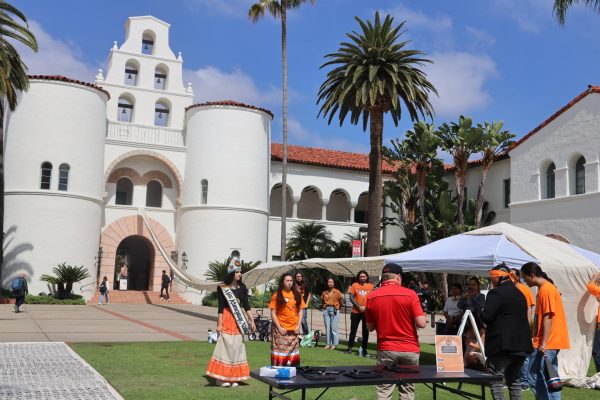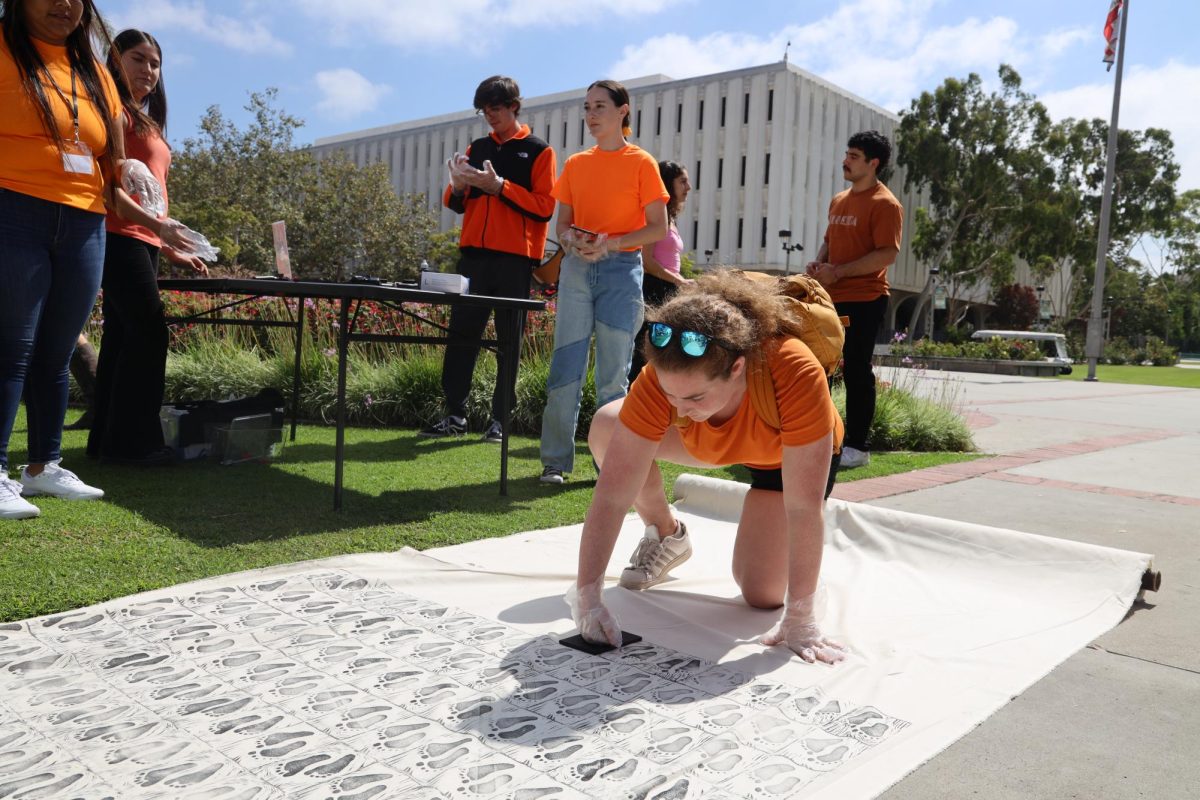On Friday, Sept. 29, students dressed in orange clothing joined the Native Resource Center in front of Hepner Hall to commemorate Orange Shirt Day.
The event — established in 2013 — served as a way for students to learn and remember the history that still impacts the Native American community to this day.
Thousands of Native American students were forced to attend Saint Joseph’s Mission Residential School in Williams Lake, British Columbia, between 1891 and 1981.

Over the last decade, Orange Shirt Day has evolved into a day of remembrance and honor of Indigenous children who faced inhumane treatment — some resulting in death — at residential boarding schools in the United States and Canada.
“I think one of the most important things that we have to remember is that education was really forced on Native people,” said Chris Medellin, director of the Native Resource Center. “Doing an event like this is really just to make sure the stories are told because a lot of different people’s histories are just not covered.”
Medellin also commented on the idea that while progress has been made for Native Americans, there’s still much more work to be done.
“I think education allowing more narratives and stories to be told is a first step in a lot of ways,” Medellin said. “There’s a lot of other actions that we can take afterward because it’s going to be an ongoing issue as long as people are silenced.”
Although Orange Shirt Day serves as a day for remembrance, the Native Resource Center paid further homage to this message with cultural music and dances. With their songs and dances, Jacob Waipuck, assistant professor of American Indian Studies, alongside Harmony Sweetgrass, 2023 Miss Kumeyayay, captivated a large SDSU crowd in harmony.
Incense filled the air as Waipuk softly banged a drum, singing songs of Native pride while Sweetgrass and other students swayed to the soft beat.
Attendees added onto a long banner of years past, lithographing 2 feet, symbolizing the countless number of students who faced hardships.
“Our intention of coming out here in front of Hepner Hall is to have this visual art representation to show the gravity of the impacts of the

boarding schools,” Haley Okamoto, assistant director, said. “It’s estimated that a little over 60 thousand students or children were impacted by residential schools, so with this tarp and the one we’re working on right now, we have a little over 5 thousand footsteps. That’s 5 thousand out of 60 thousand children who have been impacted.”
Those who weren’t members of the resource center came out and showed support for Orange Shirt Day.
“It’s really important to recognize all the students that were affected because in order to bring awareness and good culture, it comes with student advocacy,” Dara Paz, a third-year student, said. “A lot of those younger students that were in there are now older adults and now have to suffer consequences of mental health and are learning to be proud of their culture again.”
Attendees took part in the activities and came to learn the importance of why this history of Native American students is remembered.
The SDSU Native Resource Center is located at West Commons 115, and is open Monday through Thursday from 10 a.m. to 6 p.m. and Fridays from 10 a.m. to 4 p.m.
For more information visit the Native Resource Center here.









